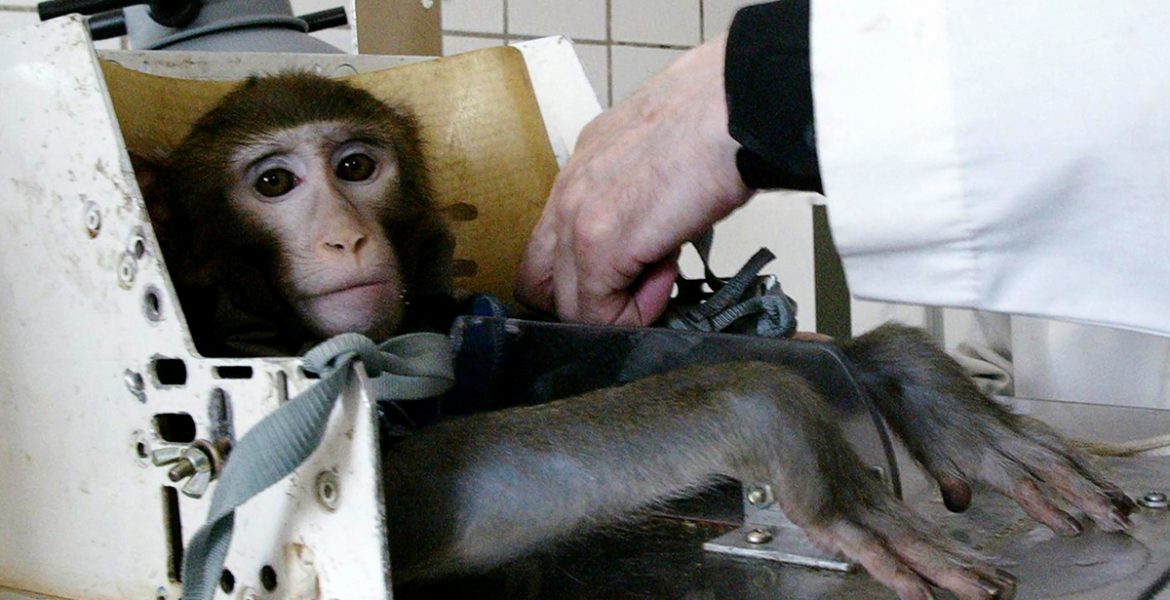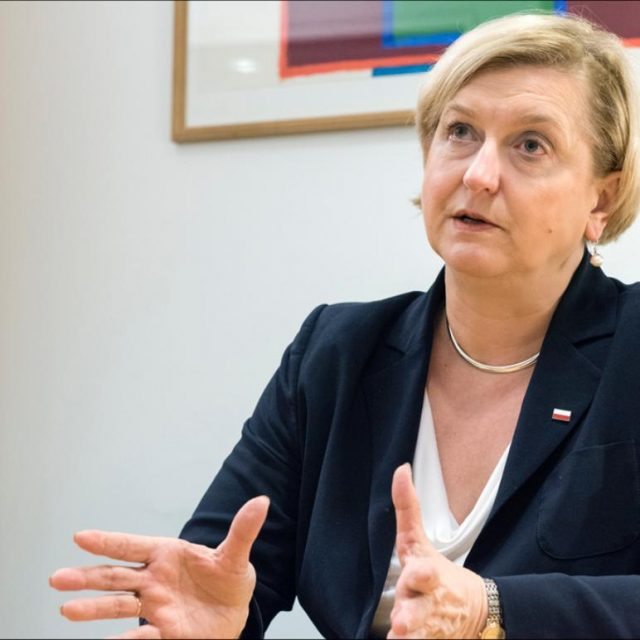A high level conference has heard about the work being undertaken by two pioneering EU funded projects whose aim is partly to find innovative alternatives to animal testing.
Animal testing remains a highly sensitive issue and there are growing calls for the practice to be outlawed, including by the chemical industry.
Speaking at an online event in Brussels, called “A new toolbox for citizens’ protection: Implementing science into EU policy”, were Prof Bob van de Water, from the EU-ToxRisk project and Shareen Doak, coordinator of the PATROLS project.
Both explained their work with the two projects, which are coming to the end of their terms, and agreed on the need for speedy implementation of any findings and recommendations.
Prof van de Water said the aim of EU-ToxRisk is to “drive a required paradigm shift in toxicological testing away from ‘black box’ animal testing with the ultimate goal being to deliver testing strategies to enable reliable, animal-free hazard and risk assessment of chemicals.”
van de Water, of Leiden University, said his project is almost in its final stage with just a few months left and has been supported by the EU Horizon 2020 programme in the EU’s last funding period.
He explained his project, saying, “The project is all about the protection of the human population from chemicals, most of which are tested on animals including for pharmaceuticals. We want a more independent approach to this. What is also important is that we talk to each other about this and that we define strategies, such as the use of stem cells, to help the regulators who, after all, have to make the decisions at the end of the day. The question is how we can apply all this for hazard and risk assessment by the regulators and industry. We also need to looking at ways of bringing new applications faster to validation and implementation.”
He added, “We continue this journey.”
PATROLS, meanwhile, is an international project combining a team of academics, industrial scientists, government officials and risk assessors. Its aim is to deliver “advanced tools and methods” for nanomaterial safety assessment which will, it is hoped, minimise the necessity of animal testing.
Shareen Doak is coordinator of the PATROLS project, who is based at Swansea University in South Wales and is a professor of toxicology. She admitted that, with the pandemic, they had been working in “challenging times.”
She said, “There are a lot of parallels with EU-ToxRisk and the challenges it faces are shared by us.
“Our project was launched in 2018 and this is our final month. We have 24 partners in 14 countries and the aim has been to better support regulatory risk assessment and we have developed advanced 3 D models of the human lung. What we did is ensure it could report on a range of hazards in order to evaluate toxicity. We extended the use of these models for other things.”
She added, “What we have is a suite of methods which give us greater insight into this issue and Nano-material exposure. This is important.
“Implementation of these methods is the key now because there is only so much you can do in four years of this project. But we have tried to transfer our knowledge to ongoing research and testing approaches. We need to integrate these new methods and tools as soon as possible but that is not so easy.
“This is our final month but, today, I have tried to showcase a bit what we are doing,” she said.
Doak added that the PATROLS project aims to “establish and standardise a battery of innovative, next generation hazard assessment tools to better predict adverse effects caused by long-term, low dose nanomaterial exposure in human and environmental systems to support regulatory risk decision making.”
She said, “PATROLS has delivered a suite of more representative in vitro (non-animal) tools tailored to better understand human & environmental hazards following exposure to engineered nanomaterials. These novel testing approaches can be implemented as part of a safe- and sustainable-by-design strategy, to support legislation in minimising the need for animal testing in regulatory safety assessment.”
Both projects, worth about €40m, have received funding from the European Union’s Horizon 2020 research and innovation programme.
The workshop’s objective was to offer an overview of current EU strategies for citizens’ health protection and their main aims. It also sought to provide feedback and dialogue with two of the most relevant toxicological programmes – EU-ToxRisk and PATROLS – on how their results can help deliver EU strategies.
A third aim was to identify key steps for further implementation of the EU’s flagship Chemical Strategy for Sustainability.
Jana Drbohlavova, from the European commission, who chaired the four-hour workshop, told participants, “The aim of today’s event was to showcase the new strategies for risk assessment of chemicals and alternative testing to animal testing. This is all in line with the EU’s chemical strategy for sustainability and the EU Green Deal. As we have heard today there are clearly lots going on in order to meet these ambitious EU objectives, including the creation of an open platform on the safety aspects of chemical risk assessment. We have had some very interesting presentations including the OECD’s chemicals safety procedures and methods. Much of this work is complex, time consuming and costly but it is still fascinating.”
Kathrin Schutte, a European Commission policy officer at the environment directorate, said, “One of the commission’s main ambitions is for a toxic free environment. This is what we are working towards and industry using safe chemicals which are controlled. We all agree these ambitions are quite high and addressing them will need new solutions and new technologies. We want to reduce dependency on animal testing – to move away from such testing – and also to improve the quality of testing. in the many different streams there is much increased support for new methods for risk assessment.”
Another keynote speaker, Anne Gourmelon, of the OECD, explained some of the organisation’s work in the field, saying, “We help countries to have tools for conducting their risk assessments. Our objectives include promoting good practices, providing dialogue on technical issues related to chemicals management, and a mutual acceptance of data on animal testing. We also try to promote non animal approaches to chemical safety.”
Elisabeth Berggren, of the EU’s Joint Research Centre, who was also spoke, told the event about its work on non animal science, saying, “The chemical strategy aims to ensure that new ideas can be accepted and implemented on a global scale. This is necessary because it is estimated that some 2.7 percent of all total global deaths is due to chemicals which is not a small figure, also, the environmental effects of chemicals is alarming. Europe is the 2nd biggest producer of chemicals and our work is to protect health and help EU industry towards producing green chemicals.
“What is risk management? Well, in the first case you have to decide that certain things are not acceptable while in the 2nd case you need to assess what is acceptable. We need to move away from the idea of having complete data for everything and start to create what I would call new comfort zones and sustainable development,” she added.
Another speaker was Christophe Rousselle, a toxicologist with ANSES, who, based in France, works with three EU agencies on an environmental scheme called PARC.
He told the event, “The aim is to protect human and environmental health, to support the chemical strategy. promote, to also promote R&D and to make data available for all users. We will also try to promote new risk assessment through training. We also want to help establish permanent dialogue between scientists and regulators.
“With the PARC project, we will monitor human activity on the environment and look at current knowledge gaps.”
The Commission’s zero-pollution ambitions contained in the Green Deal were also touched upon several times during the half day event.
A key component of the Green Deal is the Chemical Strategy for Sustainability, published nearly one year ago.
On August 9, the commission launched a public consultation on the revision of the Regulation on the classification, labelling and packaging of chemical substances and mixtures (“CLP Regulation”). The revision is one of the 85 actions planned in the chemicals strategy and seeks to achieve a higher level of protection of citizens and of the environment against hazardous chemicals.
The consultation will gather the views of citizens, institutions and organisations from the public and private sectors.
The virtual event, on Thursday, heard that the chemicals strategy will require tools and methods in several areas. This includes the next generation of advanced safety assessment tools delivering new chemicals that are safe and sustainable to protect people and the planet. Another aim is that such tools and methods that can be used by regulators to harmonise responses. It is also hoped new technologies will help in the reduction of animal use for safety testing.
The chemical strategy, it was said at the event, is expected to result in significant revisions of the EU legislative framework, such as the Cosmetics Regulation and the REACH Regulation, to deliver “a toxic-free environment.”
The event heard that while toxicity testing on animals is costly and highly time-consuming (up to the animal’s entire life span), the number of chemicals whose toxicity is still unknown continues to grow.
It was said that if concrete steps are not taken in the near future to accelerate a transition to non-animal models, not only will the number of the animal experimentations increase, but the EU’s ambitions could result in a backlog of new chemicals “stuck in the review processes.”
Alternatives to animal testing, also known as New Approach Methods (NAMs), promise to fill the knowledge gap, the event was told.
It is hoped, several participants said, that these will provide risk assessors and regulators with “faster, more reliable and ethical solutions by enabling them to better identify, classify and ultimately remove hazardous substances from the environment.”
Separately, MEPs are set to vote on new initiatives aimed at phasing out animal testing.
During next week’s plenary session in Strasbourg MEPs will vote on an important text on non-animal testing, a move welcomed by EU-funded project coordinator.
The motion for a resolution concerns the 10 million laboratory animals used yearly in the EU and calls for an Action Plan to facilitate the transition to innovation without the use of animals in research, regulatory testing and education.
The EU is currently funding three other research projects aiming to advance the safety assessment of chemicals without the use of animal testing: PrecisionTox, ONTOX and RISK-HUNT3R.
Led respectively by the University of Birmingham, Vrije Universiteit Brussels and the Leiden University, these have formed the “ASPIS cluster” which gathers 70 research organisations and will receive €60m over the next 5 years to develop ethical solutions for the advancement of regulatory testing.
The project coordinators, Professor John Colbourne, Prof. Mathieu Vinken and Prof. Bob Van de Water, have backed the parliamentary initiative saying they hope it will soon be translated into the EU legislative framework.
The coordinators state “The Motion for Resolution of the European Parliament is timely to accelerate this transition and meet the EU ambition to lead on the next generation for risk assessment in Europe and worldwide.”




